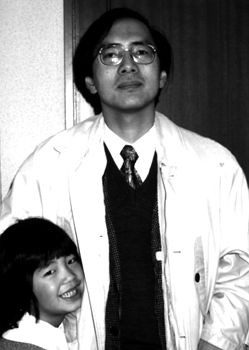
 |
Hidekazu AritaNovel Functions Mitsubishi Laboratory |
I spent a year and a half from September 1992 to March 1994 working on "self-organizing information base" in the Information Integration Lboratory of Tsukuba Research Center's Theory and Novel Functions Department. Even after returning to Mitsubishi Electric's Central Research Laboratory, I have continued research on a self-organizing information base as a member of the Novel Functions Mitsubishi Laboratory.
Before the temporary researh assignment to the TRC, I spent some time as a temporal researcher at the ATR which is located in Kansai Research City. I am truly fortunate to have had the opportunities to work in the best research enviroments in the eastern and western parts of Japan. My Experience at the TRC has given me a valuable human network with many researchers outside my company. I am sure that this will be a valuable asset in my future career as a researcher.
Since joining Mitsubishi Electoric Corporation, I have worked consistently on research assignments relating to the natural language processing such as the researh on sentences for the purpose of machine translation at Mitsubishi Electric, research on dialogues for the purpose of automatic interpreting telephony at the ATR, and research on documents for the purpose of text data basis at the RWC.
A self-organizing information base is a new type of database that is created by automatic structuring of the information spae of a large volume of raw text data such as newspapers and technical publications ( daa that is distributed in massive quantities in the real world) by automatic classification of documents, automatic indexing of documents and document clusters, mapping of concepts described in documents, etc., and finishing them in a visually understandable and interactively accessible manner by users.
Conventional daa bases are accessed by users with sufficiently clear objectives utilizing a keyword matching process which offers an extremely narrow information retrieval channel. In comparison, the self-organizing information base allows users to access information by browsing visualized information space which is a much larger channel and therefore allows grasping the condition of the entire information base. The information space that can be browsed by users does not have a prearranged structure but it is automatically structured from the contents of information.
The users of a self-organizing information base are guided by the automatic clustering, automatic indexing, and conceptual mapping functions around the information space according to their interest and they can stop at especially interesting areas for a detailed information retrieval. In short, one can take a stroll through a self-organizing information base.
This is the fourth year since the RWC Project started, and it is time for harvesting the results of our reseach efforts. My personal plans for this year are filing patents, writing papers for publication in professional journals, and producing a prototype system.